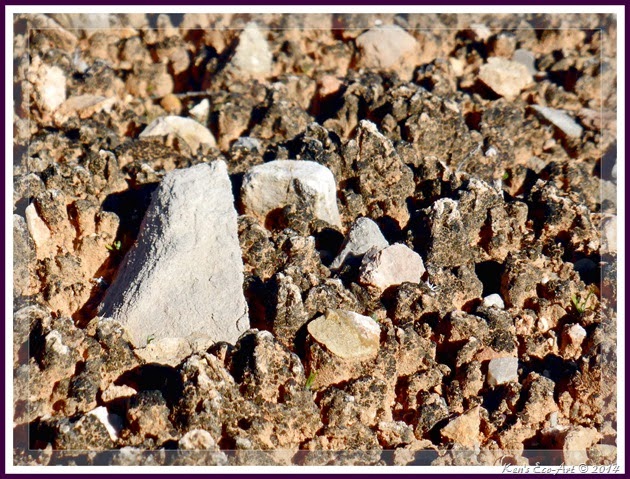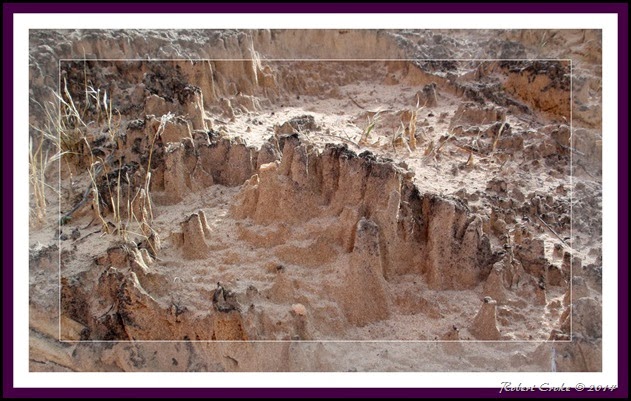{Click on an image to enlarge, then use the back button to return to this page}
This page last updated on 01/07/2018
| |||||
Picture Notes: The pictures in (Figs. 01 & 03) were captured while taking a guided hike to the Pinnacles in the Valley of Fire. Our guide pointed out examples of these cryptobiotic soils that surrounded some of the trail areas that we were hiking, noting how important they are to preserving the natural environment. My hiking partner, Bob Croke, got down on the ground for a great up-close-and-personal close-up (Fig. 03) of these unique organisms. The pictures in (Fig. 02) were captured on 1/1/2016 while hiking another of the parks' guided hikes of the Duck Rock Trail.
They act as large sponges, soaking up rainwater before it has a chance to run off. They then help prevent the water from evaporating away. This fragile ‘crust’ also prevents the soil from blowing away as dust. Some scientists estimate that these cryptogamic communities dominate up to 70% of desert soils on the planet. Unfortunately, all of these benefits disappear as soon as the seal is broken. When people, vehicles, and animals, travel across these soils, they break down the networks, starting erosion, creating dust, and allowing invasive plants to take root. When destroyed, they can take anywhere from 7 to 250 years to regenerate. To read more about Crytobiotic Soil go to ... Reference - Cryptobiotic Soil |



